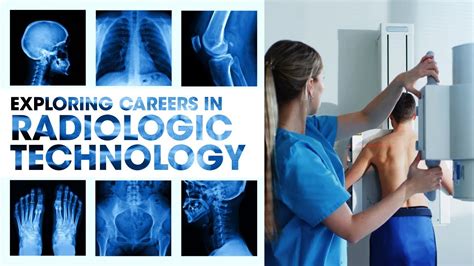Are you interested in a career in the medical field, but don't want to spend years in school? Becoming a radiology technologist, also known as an X-ray technologist or radiologic technologist, may be the perfect career path for you. With a relatively short education and training period, you can start working in this exciting field in no time. In this article, we will outline the 5 steps to become a radiology technologist.
Radiology technologists play a vital role in the healthcare system, using specialized equipment to create images of the body that help doctors diagnose and treat injuries and illnesses. It's a rewarding career that requires strong technical skills, attention to detail, and excellent patient care skills. Let's dive into the 5 steps to become a radiology technologist.
Step 1: Earn a Postsecondary Education in Radiologic Technology
To become a radiology technologist, you will need to earn a postsecondary education in radiologic technology. This can be a certificate, diploma, or associate's degree from a community college or university that is accredited by the Joint Review Committee on Education in Radiologic Technology (JRCERT). These programs typically take two years to complete and include both classroom and clinical training.
In these programs, you will study topics such as:
- Anatomy and physiology
- Radiographic positioning
- Radiographic image analysis
- Radiation safety
- Patient assessment and care
You will also participate in clinical internships, where you will gain hands-on experience in a healthcare setting.
Image 1: Radiologic Technology Students in Class

Step 2: Gain Clinical Experience
During your education and training program, you will gain clinical experience in a healthcare setting. This hands-on experience will help you develop the skills and confidence you need to succeed as a radiology technologist.
You will work under the supervision of experienced radiology technologists and will have the opportunity to practice your skills in a real-world setting. This clinical experience is essential to your education and will prepare you for the workforce.
Step 3: Obtain Certification
While certification is not always required, it is highly recommended. The American Registry of Radiologic Technologists (ARRT) offers certification in radiography and other imaging modalities. To become certified, you will need to pass a certification exam administered by the ARRT.
Certification demonstrates that you have the knowledge and skills necessary to provide high-quality patient care and imaging services. It also shows that you are committed to your profession and are willing to go the extra mile to stay up-to-date on the latest techniques and technologies.
Image 2: ARRT Certification Logo

Step 4: Obtain State Licensure (If Required)
Some states require radiology technologists to be licensed in order to practice. Requirements for licensure vary by state, so it's essential to check with your state's health department or licensing agency to determine if licensure is required.
If licensure is required, you will need to meet the state's requirements, which may include passing a certification exam, completing continuing education requirements, and paying a licensure fee.
Step 5: Maintain Certification and Licensure
Once you are certified and licensed, you will need to maintain your certification and licensure through continuing education and other requirements. The ARRT requires certified radiology technologists to complete continuing education requirements every two years to stay certified.
Additionally, some states require radiology technologists to complete continuing education requirements to maintain licensure. It's essential to stay up-to-date on the latest techniques and technologies in order to provide high-quality patient care and imaging services.
Image 3: Radiology Technologist at Work

Gallery of Radiologic Technology





FAQs
What is the average salary for a radiology technologist?
+The average salary for a radiology technologist varies by location and employer, but according to the Bureau of Labor Statistics, the median annual salary for radiologic technologists is around $60,000.
What is the job outlook for radiology technologists?
+The job outlook for radiology technologists is excellent. According to the Bureau of Labor Statistics, employment of radiologic technologists is projected to grow 9% from 2020 to 2030, faster than the average for all occupations.
What are the educational requirements for a radiology technologist?
+Radiology technologists typically earn a postsecondary education in radiologic technology, such as a certificate, diploma, or associate's degree from a community college or university that is accredited by the Joint Review Committee on Education in Radiologic Technology (JRCERT).
In conclusion, becoming a radiology technologist requires a postsecondary education, clinical experience, certification, licensure (if required), and ongoing education and training. With these 5 steps, you can start a rewarding career in radiologic technology and make a difference in the lives of patients every day.
